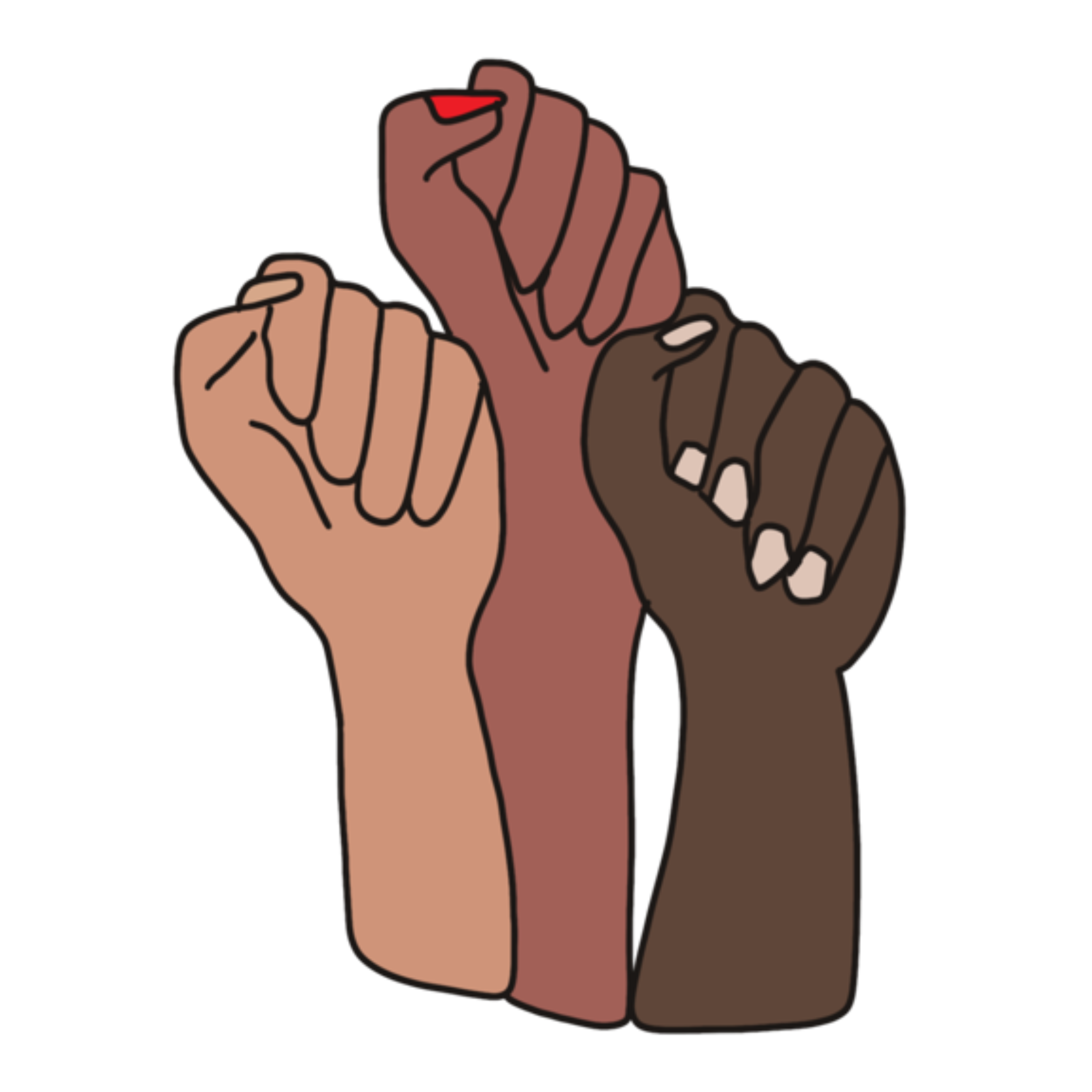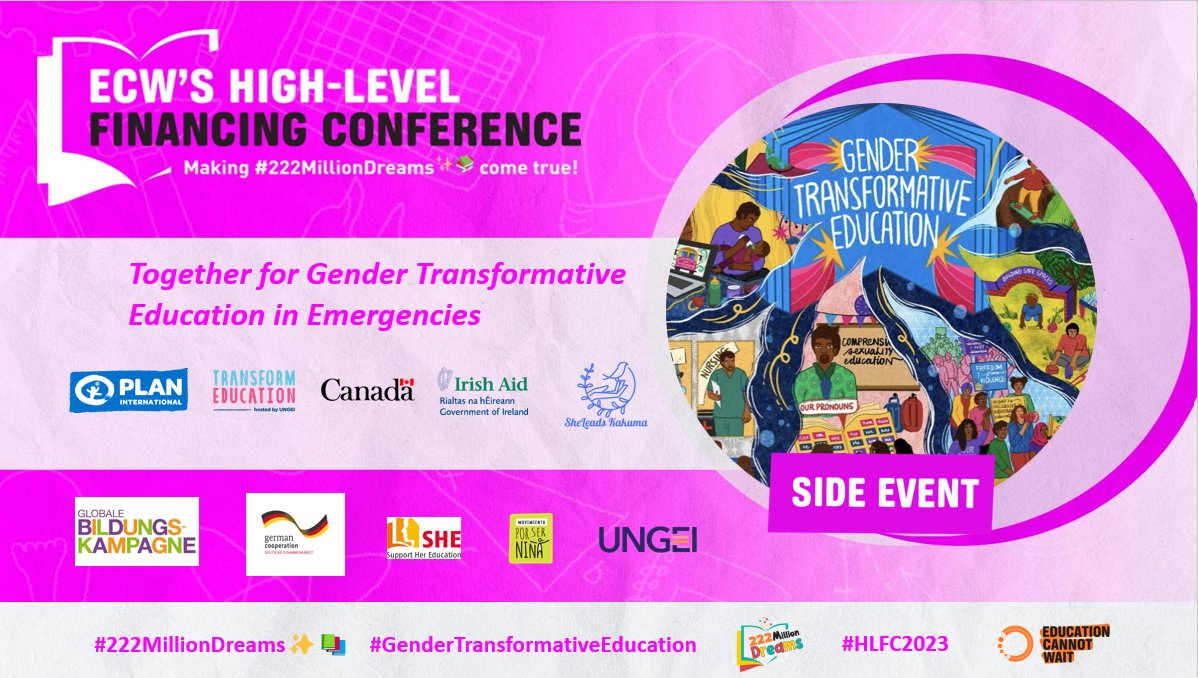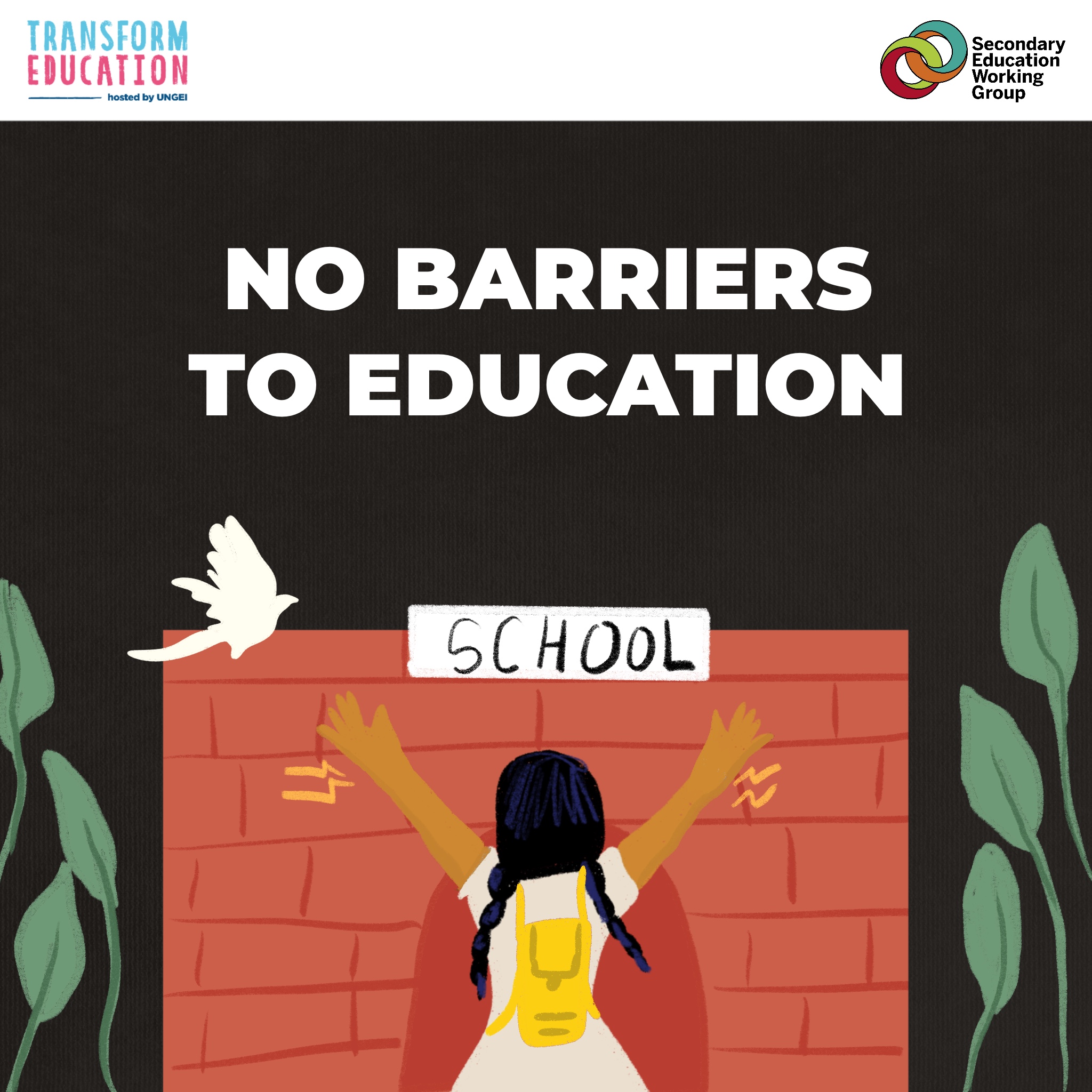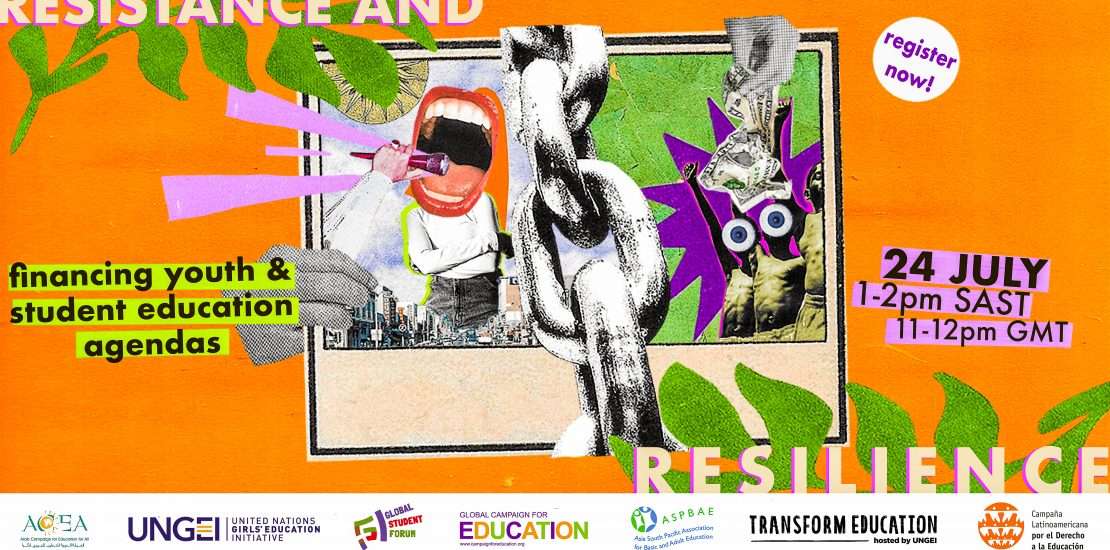Our call for gender transformative education to advance climate justice
 This feminist youth-led statement of recommendations has been primarily developed by Transform Education (hosted by United Nations Girls’ Education Initiative) including members: EmpoderaClima, Rise Up Movement; and Malala Fund fellows. Its aim is to explain the current gaps in climate education and the value of a gender transformative education with common language. It provides youth-led recommendations that organisations and world leaders can rally behind to advance climate and gender justice.
This feminist youth-led statement of recommendations has been primarily developed by Transform Education (hosted by United Nations Girls’ Education Initiative) including members: EmpoderaClima, Rise Up Movement; and Malala Fund fellows. Its aim is to explain the current gaps in climate education and the value of a gender transformative education with common language. It provides youth-led recommendations that organisations and world leaders can rally behind to advance climate and gender justice.
Gender-transformative education recognizes and seeks to redress structural inequalities that prevent equal opportunity within education systems and in the families, communities and institutions that learners and educators are a part of. It does this by setting ambition and standards for gender equality in its workforce, curricula, pedagogy and learning environments, and then allocating resources and political attention at all levels to achieve those ambitions and standards. By doing so, it harnesses the transformative power of education to bring about more just, inclusive and tolerant societies with gender equality as a core priority and value.
A gender-transformative education can equip girls with the skills and knowledge needed to tackle the climate crisis, claim and exercise their rights, and empower them to be leaders and decision-makers, including by challenging the systems and norms which reinforce gender, climate, racial and social injustices around the world.
COP26 Calls to Action
COP26 presents an opportunity to ensure gender-transformative education is recognised as crucial in driving climate justice, particularly through the review and enhancement of the Doha Work Programme on Action for Climate Empowerment (ACE).
Alongside the Declaration on Children, Youth and Climate Action (2019), the MOCK COP26 Treaty (2020) and the proposals put forward at the upcoming Youth4Climate Summit, we are calling on Parties to the COP to:
- Recognize and prioritize quality climate education in delegation briefings and recommendations, relevant negotiations, events and high level statements at COP26, building on commitments made at the G7 and the Global Education Summit
- Take a gender-transformative approach in the review and enhancement of the Doha Work Programme on Action for Climate Empowerment
- Make a pledge to the Climate Education Ministers Summit at COP26 and include commitments to gender-transformative education and youth leadership
- Prioritize and utilize the Youth and Public Empowerment thematic day at COP26 to amplify the commitments within your pledge
- Be accountable to and implement the commitments made in the Gender Action Plan at COP25, centering girls and young women in policies and process for gender-just climate action and decision making with nominated national gender focal points supporting this
- Enable children and youth, particularly girls and young women to claim their seat at the table by including them on official national delegations and/or meaningfully engaging them in all aspects of COP26 including national briefings, meetings, panels, high-level processes, and relevant negotiations
As part of the ongoing UNFCCC processes, we are calling on governments to:
- Develop national climate justice learning strategies that are gender-transformative and recognise the importance of youth leadership
- Recognise and embed these climate learning strategies in climate financing, policies and agreements, including National Action for Climate Empowerment (ACE) Strategies, and updated Nationally Determined Contributions (NDCs) and National Adaptation Plans (NAPs)
- Strengthen education systems to be more resilient and gender-transformative as part of adaptation strategies in NDCs and NAPs
The Issue
 Girls’ education is both severely impacted by climate change, and a key solution to the crisis. Extreme weather events can destroy school buildings and access routes, cause widespread internal displacement, increase levels of poverty and food insecurity, impact livelihoods and result in negative coping strategies, all of which affect school attendance rates. Yet impacts are not felt equally within communities. Discriminatory social and gender norms mean that girls and women, as well as those marginalized by race, sexuality, disability, ethnicity, economic status, are disproportionately affected by climate change and often have the fewest resources to cope. For girls in particular, increased risk of child, early and forced marriage and unions, as well as the unequal domestic burden and increased household chores, means they are more likely to drop out or miss school due to climate impacts.
Girls’ education is both severely impacted by climate change, and a key solution to the crisis. Extreme weather events can destroy school buildings and access routes, cause widespread internal displacement, increase levels of poverty and food insecurity, impact livelihoods and result in negative coping strategies, all of which affect school attendance rates. Yet impacts are not felt equally within communities. Discriminatory social and gender norms mean that girls and women, as well as those marginalized by race, sexuality, disability, ethnicity, economic status, are disproportionately affected by climate change and often have the fewest resources to cope. For girls in particular, increased risk of child, early and forced marriage and unions, as well as the unequal domestic burden and increased household chores, means they are more likely to drop out or miss school due to climate impacts.
In 2021, climate-related events are estimated to prevent at least 4 million girls in low and lower-middle-income countries from completing their education. If current trends continue and urgent action is not taken, by 2025, climate change will be a contributing factor in preventing at least 12.5 million girls each year from completing their education1.
We know that education plays a role that is protective, lifesaving and life-sustaining during climate disasters and displacement. It is also one of the most effective solutions we have to respond to the climate crisis. Existing research reveals that every additional year of schooling for girls leads to significant improvements in a country’s resilience to climate-related disasters. Despite this, no Nationally Determined Contribution (NDC) formally recognizes investment in girls’ education to achieve their climate strategy. While 68% of NDC’s talk about education, references are vague and focused on awareness raising, rather than targeted at young people or part of a national curriculum to combat the climate crisis2.
In many schools today, students are taught from an outdated curriculum that is the product of a patriarchal and imperialist system. This mode of thinking perpetuates a culture of oppression and dominance over people and planet, undermining climate action and the care and regeneration needed to live in harmony with nature. It also tends to reinforce gender stereotypes and dictate future career paths for girls and boys, limiting their potential for civic engagement and leadership in a greener economy and climate diplomacy roles. This is demonstrated by the fact that women make up just 20-25% of the workforce in the renewable energy industry3, and in 2019 only 39% of national delegates were women4.
In a recent survey5:
- 1 in 5 participants rated their climate education as poor or very poor
- 82% didn’t know where to find information on the Paris Agreement
- Only 16% had learned about the gendered impacts of climate change.
- Girls and young women (83%) were more likely to say that they knew nothing, very little or only a bit about climate policy processes than boys and young men (78%).
- The COVID-19 pandemic demonstrated that education systems are not as resilient as they should be and are unprepared to deal with large-scale disruption. If COVID-19 was a test paper for the future, climate change will be the final exam.
The solution: gender-transformative education for climate justice
 An effective climate response relies upon making education systems stronger and more resilient, supporting students to build adaptive capacities and promoting pro-environmental behaviour. This can only be achieved through a gender-transformative approach that considers the specific needs of all students, particularly the most marginalized. With so much at stake for people and planet, the transformative power of education must be leveraged to build a more equal, peaceful, and sustainable world.
An effective climate response relies upon making education systems stronger and more resilient, supporting students to build adaptive capacities and promoting pro-environmental behaviour. This can only be achieved through a gender-transformative approach that considers the specific needs of all students, particularly the most marginalized. With so much at stake for people and planet, the transformative power of education must be leveraged to build a more equal, peaceful, and sustainable world.
We are asking leaders to invest in a climate education that is gender-transformative and includes at least the following:
- Incorporates climate into all aspects of the core curriculum across 12 years of education and expands beyond climate science to include social/justice and political dimensions, sustainable development and a human rights framing
- Breaks down the cultural norms and traditional power structures that serve as barriers to girls’ leadership, and empowers them to hold their local communities and governments to account
- Adapts and translates climate information to local contexts and languages and different population groups: involving real life stories and examples that are locally relevant and include indigenous knowledge
- Takes an intersectional approach that leaves no child behind, and ensures all perspectives are included
- Facilitates critical thinking, learning and responsibility, with skills to support confidence building, data analysis, negotiation/debating, creativity, systems thinking, activism and feminist leadership
- Is action-oriented, shares key information and opportunities on climate policy processes and enable young people to participate in decision-making and capacity growing environments
- Invests in teachers and educators - through training and materials and by supporting their wellbeing – so they can lead and facilitate gender transformative climate education
- Strives to achieve a culture of freedom and not dominance or oppression over the people and the planet
Facilitated by:
Plan International
Malala Fund
UN Girls’ Education Initiative (UNGEI)

Signatories
UN Girls' Education Initiative (UNGEI)
Malala Fund
Plan International
Transform Education
EmpoderaClima
RiseUp Movement
UNICEF
Coalition Éducation
Global Campaign for Education
Global Campaign for Education - US
Leadership Development Association Bangladesh
UNICEF Uganda
CAMFED
Kwauk & Associates
Restless Development
Save the Children
Let Girls Learn Kenya
More to explore
Resistance and Resilience
 en
en 


 العربية
العربية Български
Български Hrvatski
Hrvatski Čeština
Čeština Dansk
Dansk Nederlands
Nederlands Suomi
Suomi Français
Français Deutsch
Deutsch Ελληνικά
Ελληνικά हिन्दी
हिन्दी Italiano
Italiano Română
Română Русский
Русский Español
Español Maltese
Maltese Zulu
Zulu አማርኛ
አማርኛ